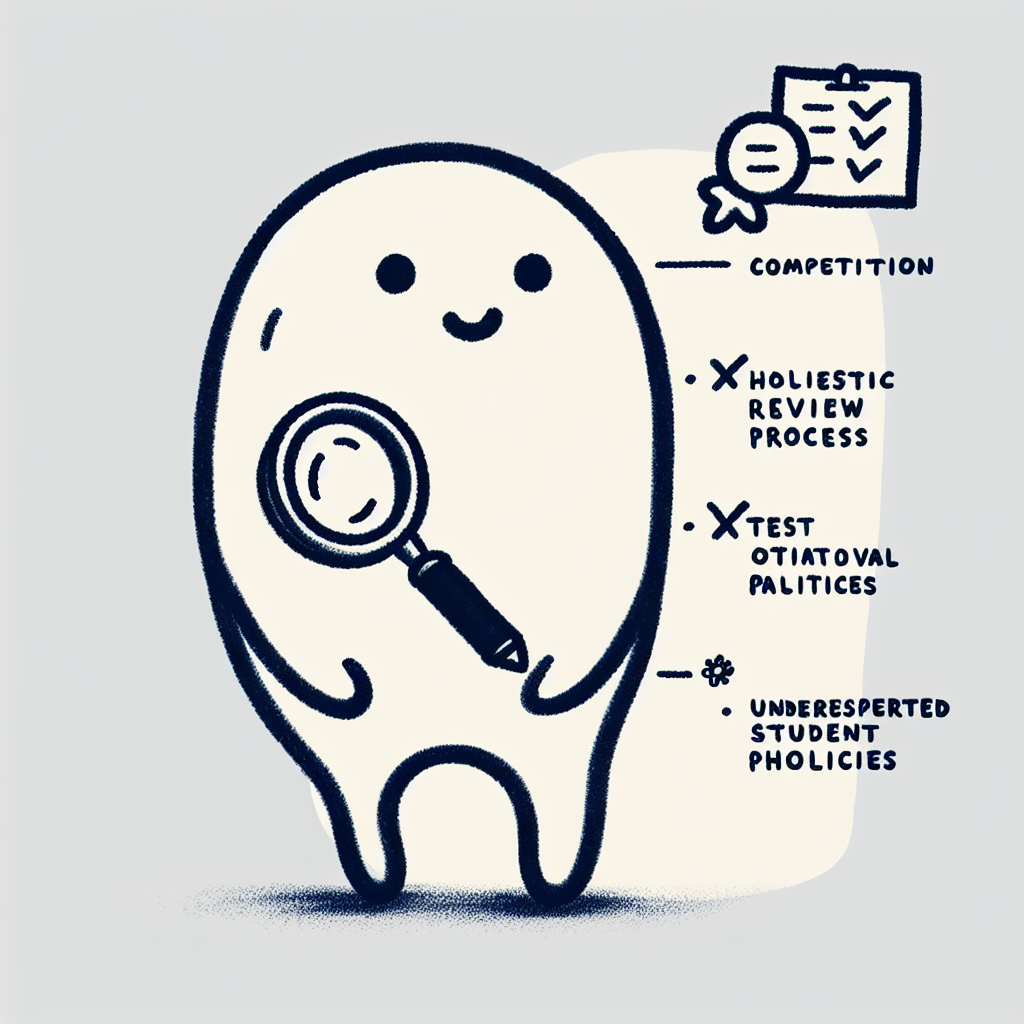Introduction
The landscape of college application requirements is continually evolving. In recent years, shifts in standardized testing policies, growing emphasis on holistic admissions, and changing demographic trends have all contributed to how institutions define what they expect from applicants. These changes reflect broader transformations in educational priorities and access.
Understanding application requirements today involves more than reviewing a checklist. Colleges and universities are increasingly relying on data-driven insights to refine their admissions strategies. This includes analyzing applicant behavior, performance metrics, and enrollment outcomes to shape what is required for admission.
This article examines how application requirements are shaped by statistical trends, policy developments, and institutional planning. By exploring these factors, we aim to provide a clearer picture of the rationale behind admissions criteria and how they are likely to continue changing in the future.

The Role of National Education Data Systems
National education data systems play a critical role in shaping and understanding application requirements across U.S. higher education institutions. These systems provide comprehensive, standardized data that inform institutional policies, applicant expectations, and national trends.
Integrated Postsecondary Education Data System (IPEDS)
The Integrated Postsecondary Education Data System (IPEDS) is a core data collection initiative managed by the National Center for Education Statistics (NCES). It gathers detailed information from every college, university, and technical and vocational institution that participates in federal student financial aid programs. IPEDS is essential for understanding application requirements because it offers granular insights into admissions processes, selectivity, and enrollment outcomes.
IPEDS data is collected annually using standardized reporting tools and methodologies to ensure consistency across institutions. Information submitted includes the number of applications received, admission rates, and enrollment statistics.
According to Fall 2021 data, Title IV institutions without open admissions policies received 12.17 million applications. Out of these, 7.33 million applicants were admitted, and 1.04 million first-time degree/certificate-seeking undergraduates enrolled (NCES - IPEDS). These figures help institutions and policymakers assess the effectiveness and accessibility of their application requirements.
Common Core of Data (CCD)
The Common Core of Data (CCD) provides foundational information about K–12 education, including demographic and school-level data. While not directly linked to college applications, CCD data is essential for understanding the educational context from which future applicants emerge. Trends in high school graduation rates, racial and ethnic composition, and school resources inform how institutions anticipate and adjust their application requirements to better serve incoming student populations (NCES - CCD).
Projections of Education Statistics
The NCES Projections of Education Statistics offers forecasts related to enrollment, graduation rates, and institutional capacity. These projections are valuable for predicting future application volumes and adjusting application requirements accordingly. For example, anticipated increases in high school graduates may prompt institutions to revise admissions criteria or expand capacity to accommodate demand (NCES - Projections).
Digest of Education Statistics
The Digest of Education Statistics compiles a wide array of longitudinal data across all levels of education. It tracks changes in admissions practices, application procedures, and enrollment patterns. This resource helps stakeholders identify historical shifts and emerging trends in application requirements, enabling more informed decision-making (NCES - Digest).
DataLab and Advanced Analytics Tools
NCES’s DataLab provides advanced analytics tools such as PowerStats and QuickStats for custom data analysis. These tools allow users to explore application requirements and trends by institution type, region, or demographic group. By enabling personalized data queries, DataLab supports more nuanced understanding and strategic planning around admissions policies (NCES - DataLab).

Application Trends and Institutional Behavior
Total Applications, Admittance Rates, and Enrollment
In recent years, the number of college applications has surged, leading to increased competition for admission. According to data from the Common Application, the 2022–2023 admissions cycle saw a 30% increase in applications compared to pre-pandemic levels. This growth has not been matched by a proportional rise in available spots, resulting in lower admittance rates at many institutions. However, a notable discrepancy remains between the number of applications received and the number of students who ultimately enroll. This gap has made yield rate—a measure of how many admitted students choose to attend—a key metric in institutional strategy. Colleges are increasingly using predictive analytics and targeted communications to manage yield and ensure enrollment targets are met.
Selectivity and Holistic Admissions
The rise in application numbers has contributed to greater selectivity, particularly at highly ranked institutions. As acceptance rates decline, many colleges have adopted holistic admissions processes to evaluate applicants beyond quantitative measures like GPA and standardized test scores. This approach considers essays, extracurricular involvement, letters of recommendation, and personal background. While holistic review aims to create more diverse and well-rounded incoming classes, it can also introduce subjectivity and potential bias. For students from underrepresented or disadvantaged backgrounds, holistic admissions can offer opportunities that traditional metrics might overlook, but disparities in access to resources can still limit their competitiveness.
The Rise of Test-Optional Policies
Following the onset of the COVID-19 pandemic, many colleges implemented test-optional or test-blind admissions policies. These changes have remained in place at numerous institutions, significantly altering the application landscape. The move away from standardized testing has contributed to rising application volumes, as students who may have been deterred by test requirements feel encouraged to apply. Additionally, early research suggests that test-optional policies can increase demographic diversity among applicants and admitted students. In response, institutions are placing greater emphasis on other components of the application—such as coursework rigor, personal statements, and recommendation letters—to assess academic potential and fit.
Digital Access and Resource Inequality
Access to digital tools and reliable internet has become a critical factor in the quality of college applications. Students with limited access to technology may struggle to complete applications, attend virtual tours, or participate in online interviews. Data from the National Center for Education Statistics (NCES) and the Common Core of Data (CCD) show that students from lower-income households and rural areas are disproportionately affected by these barriers. To address these disparities, colleges have expanded fee waiver programs, increased virtual outreach efforts, and launched application assistance initiatives. These institutional responses aim to level the playing field, but gaps in access and support remain significant challenges in the application process.
Keyword: Application requirements

Strategic Planning for Institutions
Enrollment Management and Forecasting
Strategic planning for institutions hinges on effective enrollment management and forecasting. By analyzing historical enrollment data and projecting future trends, institutions can make informed decisions about class sizes and program offerings. These projections help align institutional capacity with demand, ensuring that resources are allocated efficiently. Institutions must also balance these goals with student success metrics, such as retention and graduation rates, to maintain academic quality and institutional reputation.
Application Requirements as Policy Tools
Application requirements serve as powerful policy tools that institutions can adjust to influence the composition of their applicant pools. For example, modifying standardized testing policies or altering recommendation letter requirements can impact the diversity and preparedness of applicants. Institutions may tailor requirements to attract specific groups, such as first-generation students, international applicants, or transfer students, thereby supporting broader access and inclusion goals. Early decision and early action policies also play a critical role in enrollment management by enabling institutions to secure a portion of their incoming class in advance. These mechanisms allow for more predictable yield rates and resource planning.
Data-Driven Decision-Making
Data-driven decision-making is central to strategic planning in higher education. Tools like DataLab enable institutions to model various enrollment scenarios and assess the potential impact of different application requirements. These simulations support evidence-based policy adjustments and long-term planning. Institutional researchers are key players in this process, providing insights through data analysis that inform admissions strategies and help align them with institutional priorities and student demographic shifts.

Implications for Students and Policymakers
For Students
Understanding application requirements is essential for students aiming to pursue higher education. Knowing what institutions expect—whether it's standardized test scores, recommendation letters, or personal statements—allows students to tailor their applications more effectively. Each school may have specific criteria, so researching institution-specific requirements can significantly enhance a student's chances of admission.
Students can leverage various resources to navigate the application process, including school counselors, college websites, and online databases. These tools help clarify expectations and provide guidance on assembling strong applications that meet all stated requirements.
For Policymakers
Application requirements also have broader implications for education policy. Policymakers play a key role in promoting equitable access to higher education by supporting standardized data collection on admissions practices. This data helps identify disparities and inform targeted interventions.
Furthermore, initiatives aimed at simplifying and demystifying the admissions process—such as common application platforms or clearer communication of requirements—can reduce barriers for underrepresented students. Policymakers must also monitor how changes to application requirements impact student outcomes, ensuring that policies support not only access but also long-term academic success.

Conclusion
Understanding application requirements is essential for navigating today’s complex admission landscape. Throughout this article, we've highlighted the value of data-informed strategies, the shifting nature of institutional expectations, and the broader systemic challenges that applicants and institutions face.
Stakeholders—including students, families, educators, and policymakers—are encouraged to rely on available data sources to guide their decisions. These resources can help identify trends, clarify expectations, and support more informed planning throughout the application process.
Ultimately, promoting transparency and equity in how application requirements are developed and communicated is key to shaping a fairer, more accessible future for all applicants.














